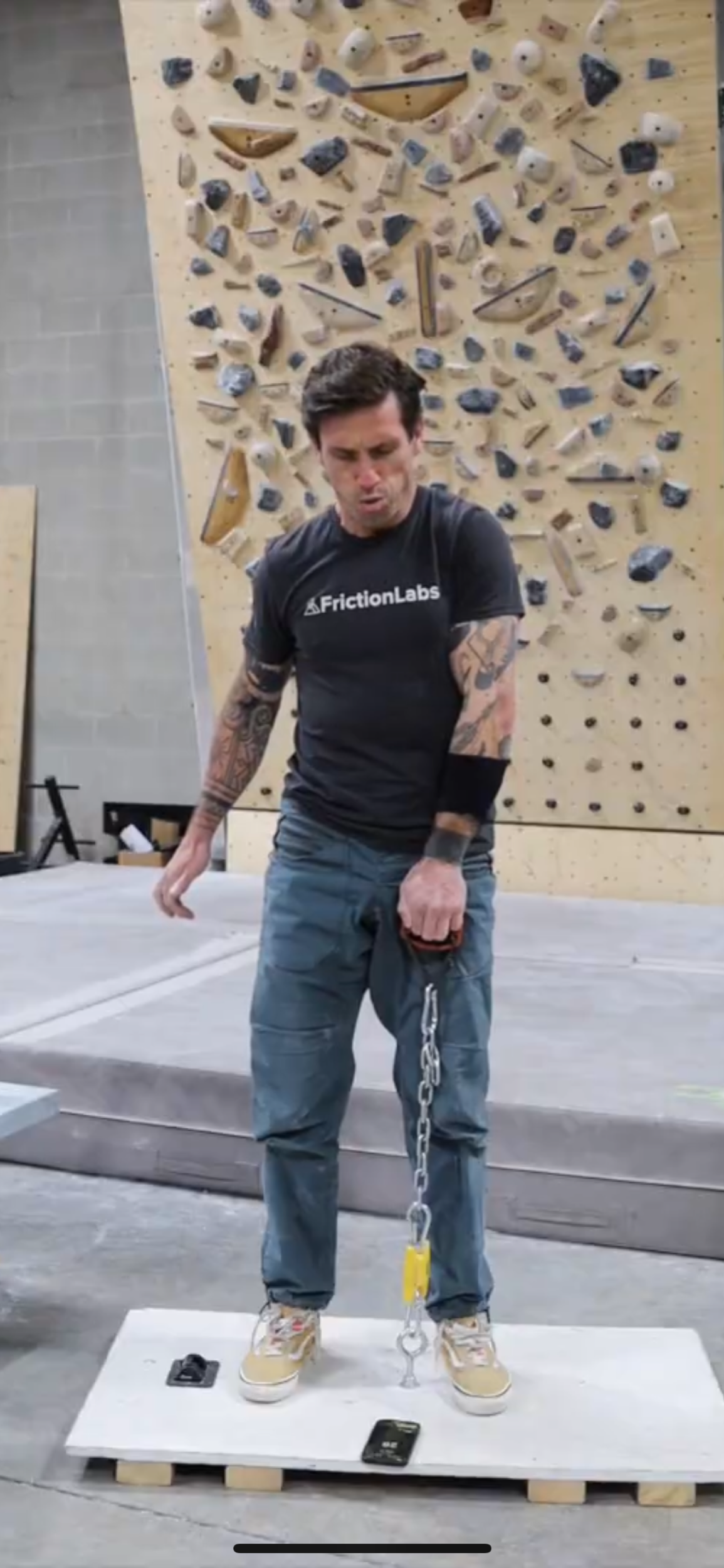While I won’t argue that the hangboard is an invaluable climbing training tool, our assumptions about how to use it, including that you should train in a full crimp or that hangs need to last for a certain duration (think 10-second max hangs), can be limiting.
Read MoreYou've likely heard that fingerboard training is good for advanced climbers and dangerous for beginners. In my experience testing and tracking professional climbers for many years, I’ve realized that this narrative is unsubstantiated. (Part 1/2)
Read MoreYou've likely heard that fingerboard training is good for advanced climbers and dangerous for beginners. In my experience testing and tracking professional climbers for many years, I’ve realized that this narrative is unsubstantiated. (Part 1/2)
Read MoreSome of you might wonder why we were even having this discussion. The best way to get super strong fingers is to do weighted hangs, right?
Read MoreClimbing isn’t that special… physiologically, that is. (Part 2/2)
Read MoreClimbing isn’t that special… physiologically, that is. (Part 1/2)
Read MoreAt first glance, it makes sense why we've used a fingerboard historically. Hanging on our fingers with added weight should equal more available force on the climbing wall. Well, this article will discuss how it isn't that simple, and in some instances, doing too much heavy and slow fingerboarding might reduce performance. And that's never our goal.
Read MoreCan proper training truly prevent climbing injuries and boost your performance?
Read MoreOver the last many years, I've invested a lot of time and effort in understanding the adaptations of finger strength training for climbing.
Read MoreWords have power. In our self-talk before we even begin climbing, in the things we say to each other on the hike in, in the things overheard at the crag, and in the vast quantity of media we all consume these days, words hold sway over our thoughts.
Read MoreDisproportionately, when climbers only use a flat edge with a fixed depth, the middle two fingers take most of the stress.
Read MoreFlexible DIP joint? Watch this tip.
Read MoreThere are 30 muscles in the hand alone.
Read MoreIt’s common to experience pain on a large edge with compression to the tendon sheath and A4 pulley.
Read MoreI’m psyched that more climbers are getting into weight training to supplement their health. The downside is the additional load on the fingers.
Read MoreAt some point, a climber’s finger joints start looking less symmetric side-to-side. Why?
Read MorePlease stop scraping with a tool, or rolling over it with a ring. Those are truly useless.
Read MoreClimbing on small holds requires leverage, and multiple factors define leverage for an individual.
Read MoreWhen we talk about 'active positions' in climbing, we're referring to grips like the half and full crimp.
Read MoreIf you have been climbing for a while, it's easy to understand that hanging below slopers uses much more friction than on other hold types.
Read More











